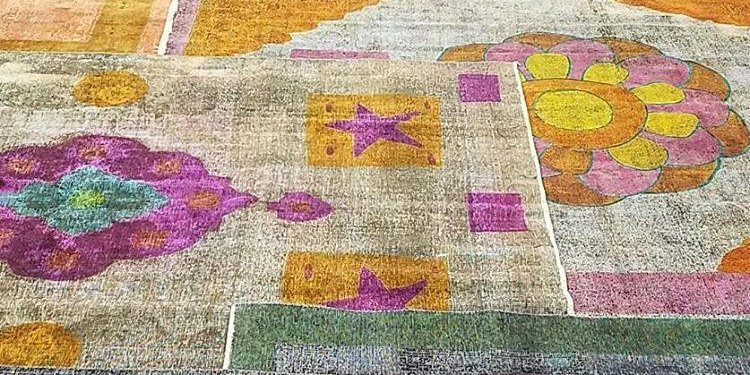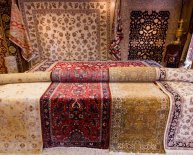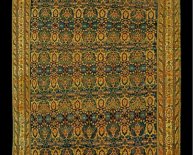
Vintage Persian Rugs
The land referred to as Persia is related to preferred reports from book “1, 001 Arabian Nights, ” like "Aladdin's Wonderful Lamp, " "Ali Baba plus the Forty Thieves, " and "The Seven Voyages of Sinbad the Sailor.” In particular, "Prince Housain's Carpet” grabbed the imagination for the West. Inside story, this apparently useless carpet from Tangu could fly, a truly magical feat within the times before airplanes. This “magic carpeting” or “flying carpeting” ended up being, normally, a Persian rug.
Today, we all know Persia better as Iran, plus it’s nonetheless residence to extremely imaginative master craftsmen in metropolitan centers including nomadic camps throughout the wilderness whom make stunning and complex rugs and carpets, but not one of those is known to really fly.
Nevertheless, a Persian rug has a distinct turn to it, a kind of ancient magic seems to infuse the designs. That’s because practices have been handed down through generations of rug-weaving families, each of that has its initial patterns, special qualities, and magnificence. In past times, all large homes had rug-weaving sheds into the back, in which rugs would be created for the home and also to make use of for bartering and having to pay fees.
Even in little houses in Iran, the complete flooring is covered with rugs, even though the useful your family can be measured because of the high quality rather than the volume of the rugs. it is not unusual for Iranians to invest heavily in carpet expenditures, because they can always be sold on the Western market.
Typically, there is a standard rug arrangement inside old-fashioned Iranian home. At the center would be the central rug or “mian farsh, ” that will be about five-to-six yards long and about six-to-eight feet broad. At one end will be the “kellegi” or principal carpet, about 10-to-12 legs very long and six foot broad. After that, along the sides for the mian farsh is two “kenarehs, ” or lengthy skinny rugs calculating five-to-six yards long by one yard wide.
Through to the turn for the century, Persian rugs were frequently long and narrow, because of the long rectangular form of most rooms and since they were made on thin nomad looms. In the late twentieth century, that practice shifted, with 65 per cent of rugs coming out of urban workshops and 35 % being made by nomads.
In Iran, rugs are used in public places celebrations plus as flags or banners to deck houses. Islamic mosques are apt to have specifically good rugs, provided to them by wealthy supporters. Mus
Persian rugs are made from wool, cotton fiber, and silk, many Baluchi tribes even use goat’s hair for selvages at edge of the carpet. The Kashan area creates probably the most silk rugs, plus the the finest & most expensive Persian rugs, making use of locally spun silk. The fine thread is knotted on a foundation of silk, producing an incredibly dense silk heap, up to 770 knots per square inch. These rugs, but are not useful for floor, and therefore are utilized much more for design.
Iranian cotton fiber can be used for the warp and weft of several Persian rugs; a cotton fiber basis gives the carpet a firm back so that it lies uniformly on to the floor and won’t wrinkle even with washing. Coarser, affordable rugs manufactured out-of hand-spun cotton fiber in smaller villages. However, since World War II, Iran has stopped importing factory-spun cotton fiber from Asia, and cotton fiber mills are located in major rug-producing areas, including Isfahan, Kashan, Kazvin, Yezd, and Tabriz.
Nomads being making the warp and weft of these rugs off wool for years and years. Their particular wool arises from sheep of each color, from off-white to black colored, alongside ointment, yellow, and brown. This difference enriches the weaver's palette.
Beauty and symmetry without symbolism is frequently the inspiration for Persian carpet design. Patterns in Persian rugs frequently draw on natural topics like trees, leaves, sprays of flowers, birds, and creatures, in addition to Chinese and Arabic geometric themes. The swirls connecting bigger decorative themes most likely result from the most popular “cloud-based structure.”
However, it is said that chrysanthemum and lotus plants represent delight and fertility, even though the iris stands for religious liberty. Toward Kurds in West Iran, a team of four roses may be the sacred tree of life, representing divine energy and everlasting life. The palm-tree may symbolize blessings or key desires awarded, while a weeping willow signals sadness and demise.
Creatures may also be thought to have definition, just like the sacred puppy which moved into Mecca before Muhammad, and a rooster might be placed into a carpet to prevent the evil attention. Lions, falcons, hawks, alongside creatures of prey are thought to signify nerve, triumph, and glory. The heron is related to longevity. Home objects like lights, vases, and combs show up on rugs, too. The lamp may be the sacred lantern of Mecca, the comb cleanliness and great brushing. Swords, needless to say, are symbols of supreme power.
















